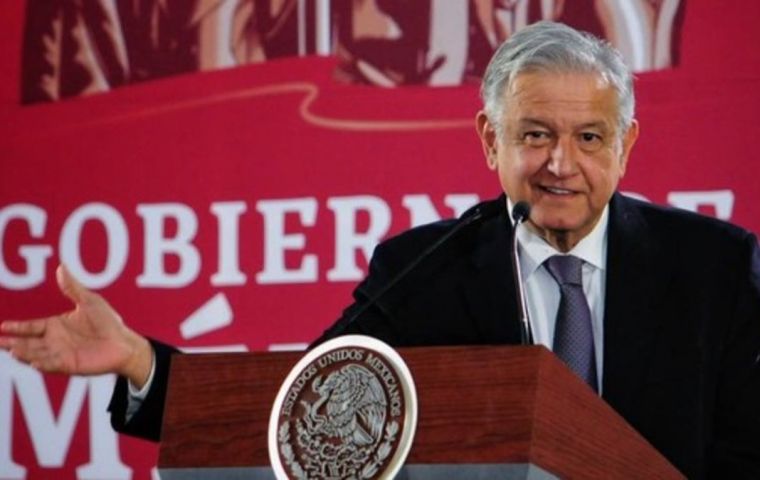MercoPress. South Atlantic News Agency
Mexico, an example of the financial plight of the Latin American media
 Between Jan/August, Lopez Obrador’s government spent 88 million pesos (US$ 4.6 million) on advertising, just 3.6% of the sum spent by his predecessor Pena Nieto
Between Jan/August, Lopez Obrador’s government spent 88 million pesos (US$ 4.6 million) on advertising, just 3.6% of the sum spent by his predecessor Pena Nieto Mexican President Andres Manuel Lopez Obrador took office in December promising to reduce public spending to free up more resources for the poor. But his austerity drive has left media outlets reeling, and raised questions about whether Lopez Obrador is trying to influence coverage.
Between January and August, Lopez Obrador’s government spent 88 million pesos (US$ 4.6 million) on advertising, just 3.6% of the sum spent in the same months of 2018 by his predecessor Enrique Pena Nieto, Public Administration Ministry (SFP) data show.
Though such spending usually rises towards year-end, the eight-month outlay is the lowest in at least seven years, and well under budget. The reduction in government publicity, which had accounted for 10% or more of advertising revenue for many outlets, has sparked layoffs and the suspension of projects in an industry still suffering disruption from the shift to the internet.
Everyone is feeling the pain, from regional newspapers, to marquee broadcasters such as Televisa and TV Azteca. Televisa’s profit fell by 20% in the first quarter and by 79% in the second.
With the media desperate for funds, some critics fear the administration could lean on them for favorable coverage.
“If the president’s goal is to regulate the flow of investment in advertising, I would celebrate it,” said Ruben Arnoldo Gonzalez, a media expert at Puebla’s Benemerita Autonomous University. “But I wouldn’t be surprised if the spending cuts are also a way to pressure the press.”
Lopez Obrador’s relationship with the media has long been rocky, and during the daily news conferences he has frequently attacked critical outlets such as newspaper Reforma, calling it an arm of the “conservative” opposition.
“The best journalists in Mexico’s history ... all took sides,” the president said in July.
Though there is no official figure for how many media operate in Mexico, the number of newspapers and magazines on the national register - those considered viable for government advertising - had by Sept. 25 fallen to 833 from 1,590 at the end of 2018, according to interior ministry data.
Quantifying Lopez Obrador’s impact on editorial independence is difficult, but the media are becoming friendlier to him, said Fernando Dworak, a Mexico City-based political analyst.
“It’s a loss of plurality, and we don’t exactly know if it’s due to financing, to public pressure or for their convenience,” he said, noting it could be all of the above.
Latin America is no stranger to such situations.
Former Peruvian President Alberto Fujimori used cash to sway newspapers and television channels in his favor.
In Venezuela, almost three-quarters of newspapers closed by mid-2018 after five years of recession. A shortage of paper for printing presses and the government’s refusal to renew TV and radio broadcasting licenses, has left coverage largely in the state’s hands.
During its six-year term, the Pena Nieto administration purchased some US$ 2.5 billion in advertising, favoring big contracts with media conglomerates Televisa and TV Azteca.




Top Comments
Disclaimer & comment rulesCommenting for this story is now closed.
If you have a Facebook account, become a fan and comment on our Facebook Page!